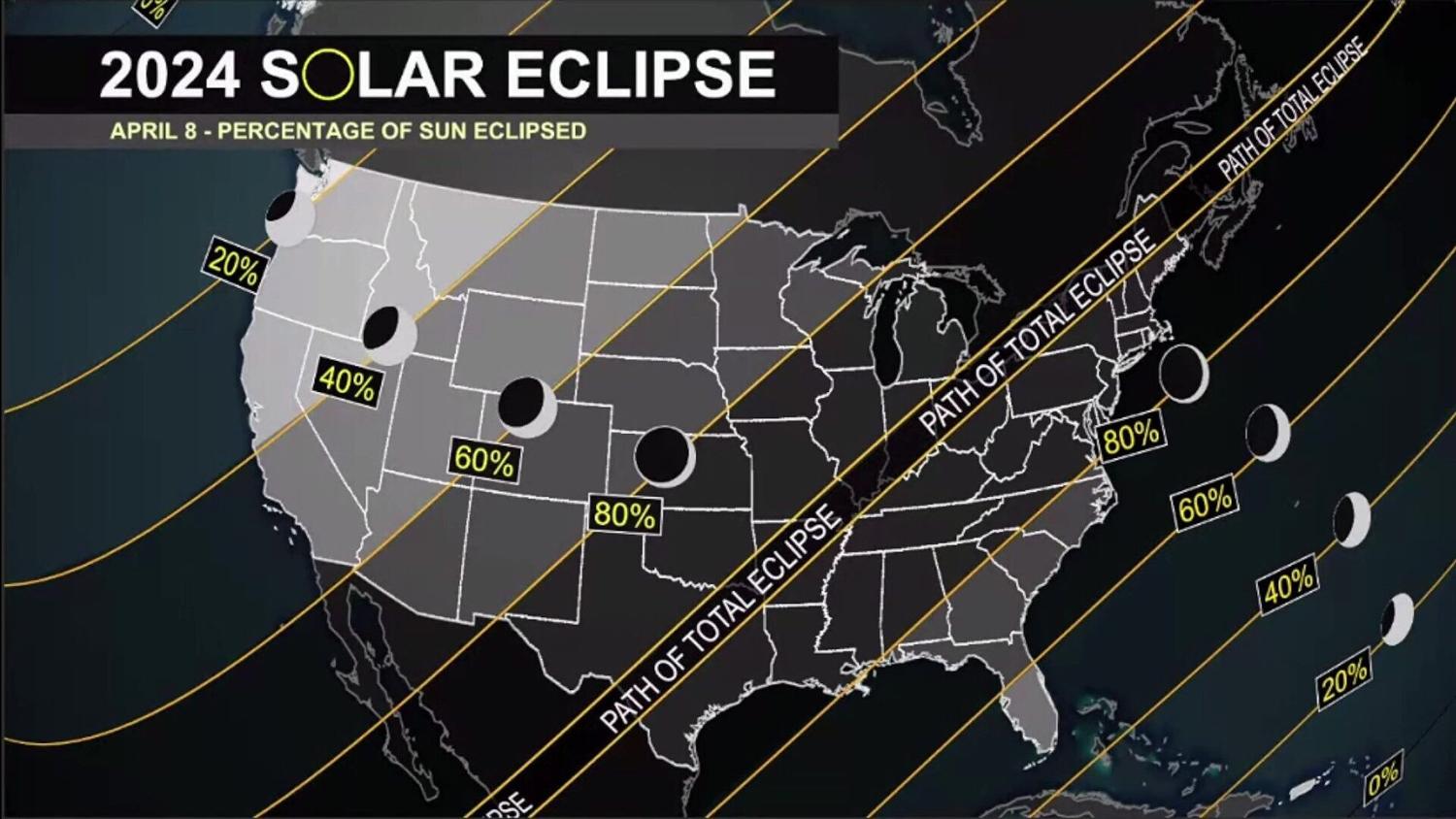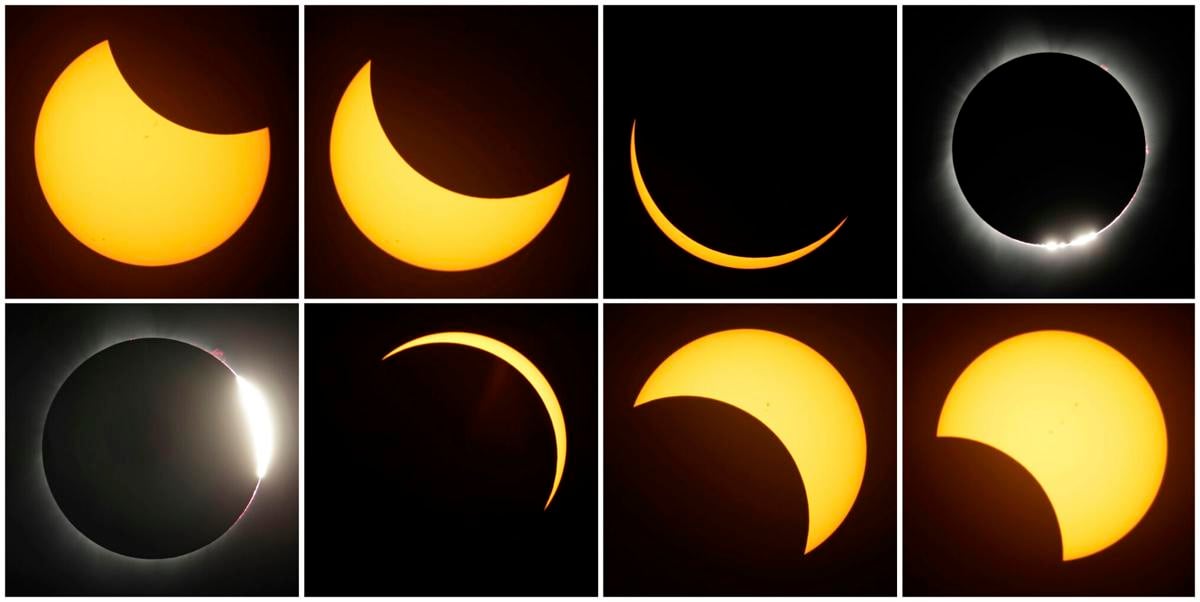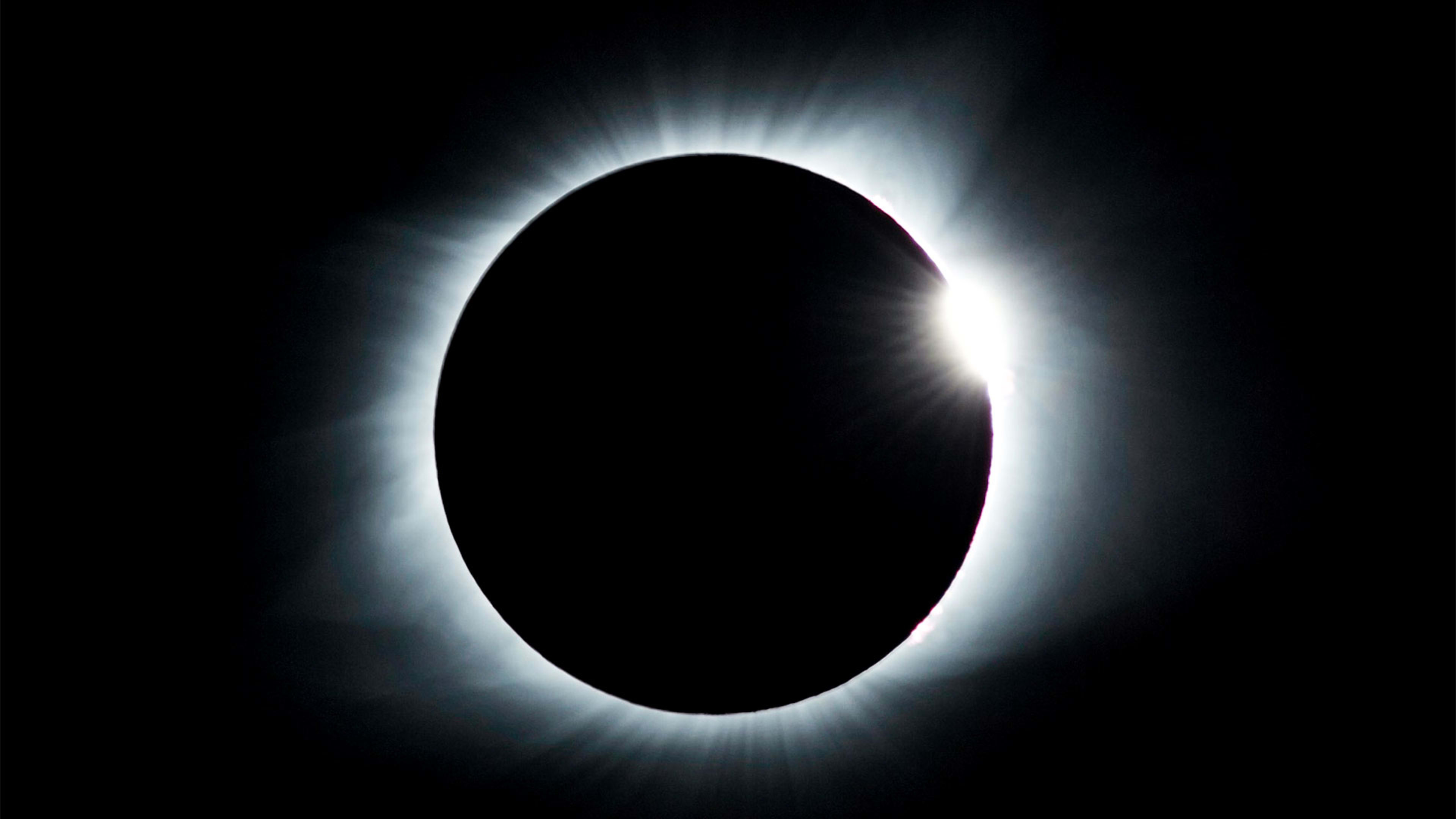Have you ever stood in awe as day turns to night in a matter of minutes, the suns radiant glow completely devoured by the moon's shadow? The experience of a total solar eclipse is truly unforgettable, a moment of profound connection to the cosmos. But while solar eclipses, in general, are relatively common, the spectacle of a total solar eclipse is an event of exceptional rarity, a celestial alignment that captures our imagination precisely because it is so seldom witnessed.
A solar eclipse occurs when the moon, in its monthly orbit around Earth, passes directly between the sun and our planet. This alignment casts the moon's shadow upon Earth, creating a temporary dimming of the daylight. The difference between a regular solar eclipse and a total solar eclipse lies in the extent of the moon's coverage of the sun. In a partial solar eclipse, the moon obscures only a portion of the sun's disk, resulting in a crescent-shaped sun. In an annular solar eclipse, the moon is too far from Earth to completely cover the sun, leaving a bright ring of sunlight visible around the moon's silhouette. However, a total solar eclipse occurs when the moon completely blocks the sun's bright face, revealing the sun's ethereal corona, its outer atmosphere. This transformative event plunges observers into an eerie twilight, offering a glimpse of the sun's normally hidden beauty.
| Eclipse Type | Description | Frequency |
|---|---|---|
| Partial Solar Eclipse | The moon partially covers the sun, creating a crescent shape. | Relatively frequent, occurring multiple times per year globally. |
| Annular Solar Eclipse | The moon is too far away to completely cover the sun, leaving a ring of sunlight visible. | Less frequent than partial eclipses but more frequent than total eclipses. |
| Total Solar Eclipse | The moon completely blocks the sun, revealing the corona and causing temporary darkness. | The rarest type of solar eclipse, occurring approximately every 18 months, but visible from any specific location only once every few centuries. |
| Hybrid Solar Eclipse | An eclipse that appears as a total eclipse at some points along its path and an annular eclipse at others. | Very rare. |
So, what makes the event of total solar eclipses rare? While solar eclipses themselves are not uncommon, with two to five occurring each year, the conditions required for a total eclipse are far more specific. The rarity arises from a combination of celestial mechanics, orbital geometry, and perspective. Let's explore the reasons behind the elusiveness of totality.
- Caitlin Clarks Parents Everything You Need To Know More
- Linda Kingsberg The Untold Story Of Ernie Hudsons Wife
One of the primary factors contributing to the rarity of total solar eclipses is the precise alignment required between the sun, moon, and Earth. The sun is vastly larger than the moon about 400 times larger in diameter. However, the moon is also much closer to Earth, roughly 400 times closer than the sun. This creates a remarkable coincidence: from our perspective on Earth, the sun and moon appear to be roughly the same size in the sky. However, this apparent size is not constant. The moon's orbit around Earth is not perfectly circular; it is an ellipse. This means that the moon's distance from Earth varies throughout its orbit. When the moon is closer to Earth (at perigee), it appears larger in the sky. When it is farther away (at apogee), it appears smaller. For a total solar eclipse to occur, the moon must be relatively close to Earth in its orbit so that it appears large enough to completely cover the sun's disk. If the moon is too far away, it will only cause an annular eclipse, leaving a ring of sunlight visible.
Another crucial factor is the alignment of the moon's orbit with Earth's orbit around the sun. The moon's orbit is tilted at an angle of about 5 degrees relative to Earth's orbital plane (the ecliptic). If the moon orbited Earth in the same plane as Earth orbits the sun, we would experience a solar eclipse every month when the moon passes between the sun and Earth. However, because of the tilt, the moon usually passes above or below the sun in the sky. Solar eclipses can only occur when the moon crosses the ecliptic, at points called nodes. The sun must also be near one of these nodes at the same time. These periods, when eclipses are possible, are called eclipse seasons, and they occur roughly every six months. Even during eclipse seasons, a total solar eclipse is not guaranteed. The alignment must be precise, with the centers of the sun, moon, and Earth nearly perfectly aligned along a straight line.
The path of totality, the narrow strip on Earth's surface from which a total solar eclipse is visible, is also relatively small. The moon's shadow is only a few hundred kilometers wide at most. As the moon moves in its orbit, its shadow sweeps across Earth's surface, tracing out the path of totality. Observers outside this path will only see a partial solar eclipse. Because the path of totality is so narrow, any particular location on Earth experiences a total solar eclipse only very rarely. On average, a given spot on Earth will only see a total solar eclipse once every 360 to 410 years. This is why witnessing a total solar eclipse is such a special and sought-after event.
- Matt Lanter From 90210 Heartthrob To Star Wars Hero More
- Charles Meltons Parents The Untold Story Of Sukyong Phil Melton
The National Weather Service reports that the moon's distance from Earth fluctuates from a minimum of 221,000 miles to a maximum of 252,000 miles. This variation of 13% in the moon's apparent size significantly affects the type of solar eclipse we experience. When the moon is at its closest point to Earth, the likelihood of a total solar eclipse increases. Conversely, when the moon is farther away, annular eclipses become more common.
The total solar eclipse of April 8, 2024, which carved a path across North America, plunging parts of the United States, Canada, and Mexico into darkness, highlighted this rarity. The eclipse began at 03:57 UTC. The occurrence of two total eclipses over the continental United States within a mere seven years the previous one being in 2017 is an unusual astronomical event. Before the 2017 eclipse, the last total solar eclipse to traverse such a large portion of American territory was in 1970.
Although there can be two to five solar eclipses annually, total solar eclipses happen approximately every 18 months. However, the chance of witnessing one from a specific location on Earth is around once every 400 years. The next total solar eclipse visible over the U.S. wont occur for another two decades, emphasizing the exceptional nature of the 2024 eclipse.
Eclipse seasons, which are periods when solar and lunar eclipses are possible, occur because the moon's orbit intersects with Earth's orbit around the sun at specific points, known as nodes. If the moon crosses a node early in the eclipse season, it can trigger a solar eclipse. About a month later, it can create a second solar eclipse on the opposite side of the node, though these are more likely to be partial eclipses.
The anticipation surrounding total solar eclipses is heightened by their awe-inspiring beauty and their rarity. When the moon completely obscures the sun, skywatchers are treated to a spectacle unlike any other. The sudden darkness, the appearance of the sun's corona, and the change in animal behavior all contribute to the experience's otherworldly feel. For centuries, humans have been captivated by these events, imbuing them with myth, legend, and scientific curiosity.
Understanding the difference between a lunar eclipse and a solar eclipse helps appreciate the unique qualities of each phenomenon. A solar eclipse transpires when the moon positions itself between the sun and Earth, casting its shadow on Earth. In contrast, a lunar eclipse occurs when Earth passes between the sun and moon, casting its shadow on the moon. During a solar eclipse, the moon moves across the sun's face during the day, temporarily darkening the sky. The experience of darkness in the middle of the day is part of what makes total solar eclipses so compelling.
The rarity of total solar eclipses also stems from the fact that the moon's apparent size varies due to its elliptical orbit. When the moon is at its farthest point from Earth, it may not completely cover the sun, resulting in an annular eclipse. Only when the moon is closer to Earth does a total eclipse occur.
In conclusion, the confluence of precise alignment, orbital mechanics, and perspective makes total solar eclipses rare events. While the next visible total solar eclipse across the U.S. is not for another 20 years, the memories of the April 8, 2024, eclipse will undoubtedly inspire skywatchers and scientists alike for years to come. The opportunity to witness the sun's ghostly atmosphere revealed in totality is a privilege, reminding us of the dynamic and beautiful universe we inhabit. The phenomenon that plunged swaths of the United States, Canada and Mexico into an unusual darkness serves as a poignant reminder of the celestial dance that governs our planet.
- Love Is Blinds Sara Carton Altar Rejection Shocking Secrets
- Wendi Adelson A Twisted Tale Of Murder Denials Drama


